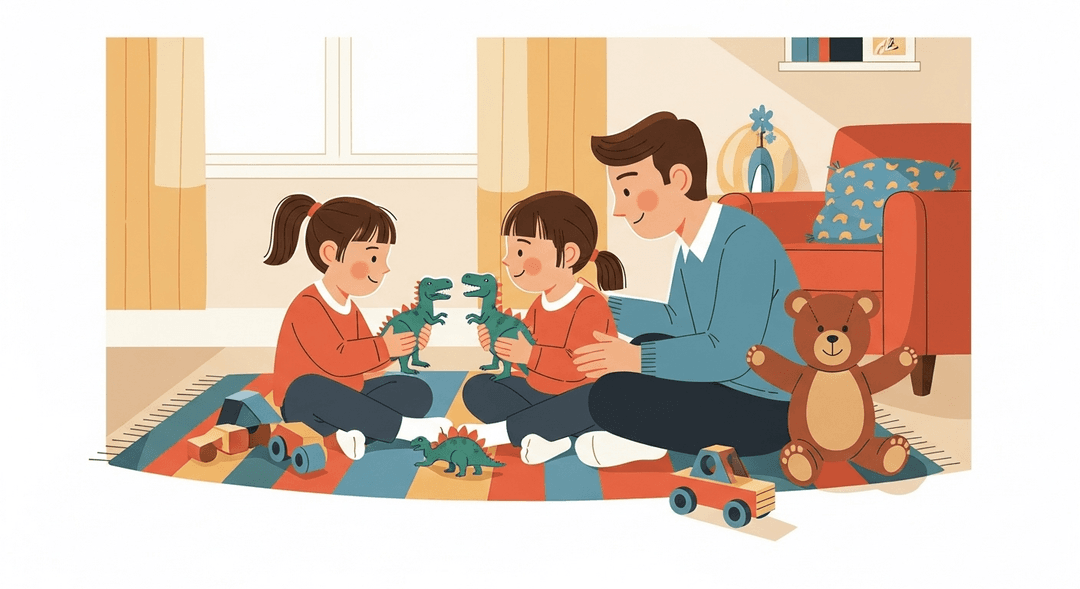Use Play to Teach Social Skills, Emotional Regulation, and Problem-Solving
Ever tried to teach your kid how to share, only to end up in a hostage negotiation over a plastic dinosaur? Welcome to Playtime Olympics, where the rules are made up and the points don’t matter—but somehow, everyone is learning! If you’re tired of lectures that go in one ear and out the other, and you’d rather let a teddy bear mediate your next sibling standoff, this one’s for you.
Play lights up the brain like a disco ball—boosting empathy, flexible thinking, and emotional regulation. When kids negotiate who gets the sparkly wand, their prefrontal cortex is doing pushups. For parents, joining in can lower stress, increase connection, and (bonus!) teach your brain to be a little more playful too.
How to do it
-
Choose a game or activity that encourages kids to interact. Good options include pretend play, board games, or building something together.
-
Allow the kids to take the lead in the activity. As they play, narrate their feelings and choices out loud. For example, you might say, “Oh wow, looks like Teddy is feeling left out!”
-
When a conflict arises (which is totally normal), pause the activity. Help the children identify and name their feelings, then work together to brainstorm possible solutions.
-
Demonstrate important social skills such as taking turns, losing gracefully, and apologizing when necessary—even if you really wanted to win at Go Fish.
Key Tips:
- Let children make choices and guide the play as much as possible.
- Use simple, clear language to describe emotions and actions.
- Stay calm and patient when conflicts happen; treat them as learning opportunities.
- Model empathy and fairness, showing that it’s okay to lose or make mistakes.
- Encourage problem-solving by asking open-ended questions (“What could we do next?”).
